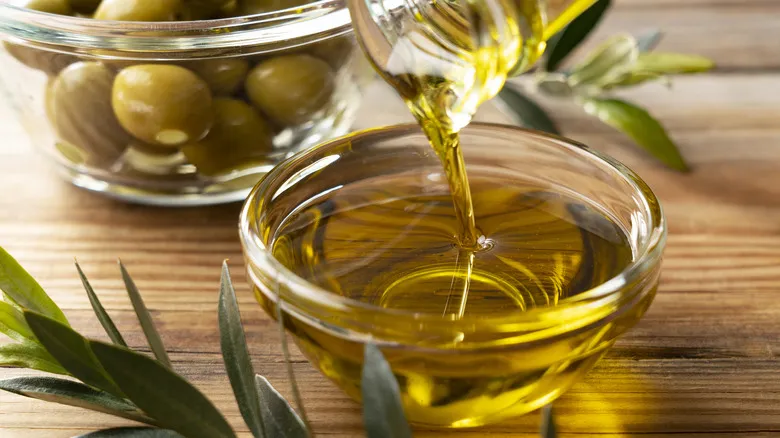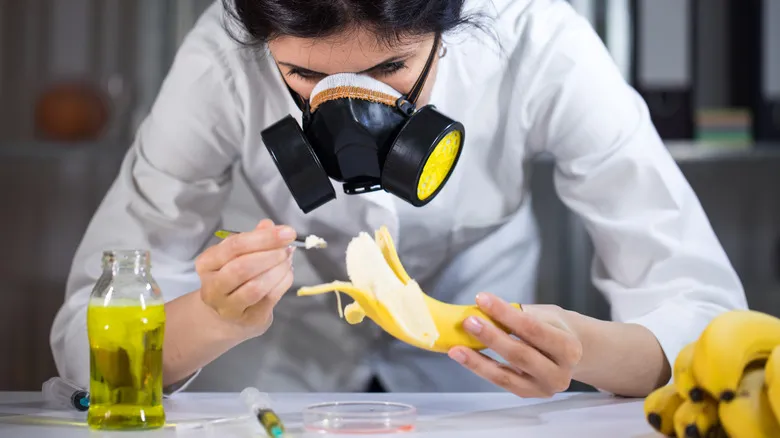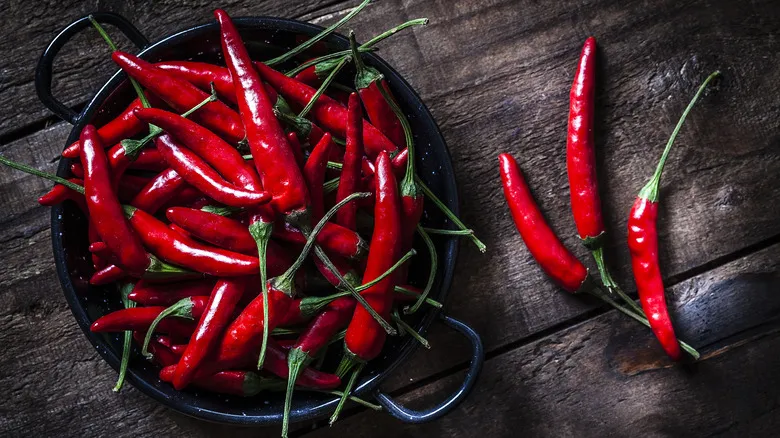Infusing spice into your diet

As you begin your adventure into the world of spicier cuisine, start with ingredients that are lower on the Scoville scale. This scale measures the amount of heat-inducing capsaicin in peppers, making it a useful guide for determining your spice tolerance. At the lower end, you'll find sweet peppers, poblano peppers, and paprika, along with milder hot sauces like Frank's Red Hot and Valentina. You can easily add more spice to your meals by incorporating a splash of a mild hot sauce into your scrambled eggs or tossing in some sliced poblanos with your fajitas.
Once you feel more at ease with mild heat, you can gradually increase the spice level. Jalapeño and serrano peppers, along with Tabasco and Sriracha sauces, as well as cayenne pepper, fall into the medium heat category and can be added to your dishes just like the milder options. A dash of cayenne can elevate the flavor of macaroni and cheese by cutting through its richness, while a spoonful of Sriracha can add a delightful kick to a bowl of instant ramen. Continue to enhance your meals with progressively spicier peppers and sauces, and soon you'll be managing the heat like an expert.
More tips for eating spicy

Consider boosting your spice tolerance as a form of physical training. Just like any workout, it's essential to care for your palate to fully appreciate spiciness over time. One effective method is to familiarize yourself with foods that can alleviate the discomfort of excessive heat. For instance, plain Greek yogurt can effectively neutralize the heat from various curries, while sour cream can mellow the intensity of spicy salsas and sauces. Additionally, acidic ingredients like cilantro and lime can help soothe the fiery sensation.
As you embark on this journey, don’t hesitate to challenge yourself occasionally by trying something you believe might be too spicy. However, don’t feel disheartened if your tolerance doesn’t increase as quickly as you’d like. Many factors, including genetics, play a role in an individual’s spice tolerance, so it’s perfectly normal if you can’t handle as much heat as someone else. If you manage to enhance your spice tolerance, it can unlock a whole new world of culinary experiences. Who knows, you might even find yourself bravely tackling a ghost pepper or Carolina Reaper one day. At the very least, you’ll be able to savor the spiciest dishes at Thai and Indian restaurants and impress your friends with your resilient taste buds.
Recommended

How Professionals Taste-Test Olive Oil

How Long Does A Tray Of Ice Cubes Take To Freeze, Really?

The Scientific Reason Artificial Banana Flavor Tastes Wrong

The Science Behind Why Pizza Tastes Better Cold
Next up

